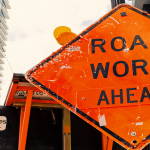Insurance – COVID-19 impacts Premiums and Renewals
The financial effect of the Coronavirus pandemic has been widespread among the citizens and businesses of the United States. As many people are being temporarily laid off, the economy has taken a swift downturn. Most people are only purchasing essentials.
Many businesses have been forced to close their doors because of the loss of revenue. Some may be closed for good.
Are you covered?
Let’s take a look at how the trucking industry will be affected by insurance costs after the national emergency.
Trucking companies may resort to cutting costs to recover from the economic slowdown we have experienced over the last several months. They must be careful, however, as some cost cutting measures could lead to diminished safety for their drivers. Decreasing staff could mean that drivers will have to run longer hours, leading to frequent driver fatigue.
It will also put more wear and tear on the trucks and trailers. There might even be delays in installing safety technologies like in-cab cameras or online training. These situations bring about increased claim activity.
How does that affect your company?
Insurance companies have to maintain a delicate balance between inflow of premiums and what claims they can afford to pay out. Just like in the trucking industry, if that balance is interrupted, the company has to adapt to stay afloat.
Insurance companies will experience changes in their loss ratio, which means will be paying out more than usual in relation to the premiums they receive. Those covered might see an increase in premiums and renewal costs as insurance companies try to recover from the additional losses.
If the loss ratio changes too drastically, underwriters may begin performing risk assessments on existing clients. They will be very selective about who they choose to take on as insureds. It may be difficult to find coverage for companies with a higher risk for accidents/incidents.
Underwriters are already cautious about making decisions when it comes to premiums, coverage, and renewals. The COVID-19 situation can have a serious effect on their current insurable metrics. Future determining factors are likely to include conditions to coverage based on in-cab cameras, safety culture, and availability of online training.
Responsible carriers will actively manage their risks. Investing in safety is the only way to win. Carriers who cut back on safety efforts to save money are setting themselves up for failure. Insurance providers may have to resort to raising their premiums or charging a higher down payment.
How should you respond?
Communicate your efforts with your current insurance partner. Let them know you have a plan on how to survive during the crisis. Include that you are focused on safety. Even though there are social distancing requirements right now, your safety training cannot be put on hold.
Find ways to adapt to the situation if safety remains a big concern. Technology allows safety training to be delivered directly to your drivers, wherever they are, through an online platform. Your current insurers will keep that in mind when performing your risk assessments.
While it is important for your insurer to be aware of the safety measures you are taking, it is just as important for your drivers. They will enjoy the convenience of taking online orientation, remote training, and monthly training classes from anywhere. And employers can retain their peace of mind knowing they are still focused on safety, even during trying times.
What factors affect a risk assessment?
Risk assessment factors usually fall into these two categories:
- Tangible – things that are quantifiable such as loss run, miles, commodities, CSA scores, etc.
- Intangible – things that are difficult to measure like company culture, awareness training, technology usage, security, etc.
What might a loss control professional ask about the intangibles?
Intangibles are difficult to measure. The amount you are charged will be up to your insurer’s discretion. Your best bet is to be prepared and make sure your drivers and employees are up to date on safety training. To give you an idea, here are some questions related to the COVID-19 pandemic they might ask:
- Did you continue safety training through the pandemic?
- How did social distancing requirements affect your orientations?
- How did you lead safety efforts working remotely?
- How did you help your drivers through this time?
- How did you manage the waivers issued by the DOT and FMCSA?
Make sure you retain records of everything provided to every driver. The only way to prove that your company has a solid focus on safety is to have documented records. The documentation should be readily available in case you need to show that all drivers are adhering to your policies.
Are we at risk of losing our business due to insurance coverage issues?
Short answer: yes.
There are many examples of trucking companies hanging up their keys because of insurance costs. If premiums increase too drastically, it can become impossible to remain operational. Here are a couple of examples of that happening:
- Carney Trucking – Insurance premiums doubled for this flatbed carrier. They had to close their doors after 27 years in business.
- 101 Transport – This Wisconsin based carrier ceased operations after a 70% increase in premiums.
Is there anything I can do to protect my company?
Yes. That’s the good news! As always, be proactive in managing your risk. Your insurance broker needs to see your safety-focused efforts.
Remember that if it isn’t written down, it didn’t happen.
Always keep a record of what training was performed, when it was performed, and make sure your drivers sign everything. For years, “billboard attorneys” have been attacking the trucking industry, encouraging the general public to sue truckers.
And they are ruthless when it comes to safety.
During the pandemic, truckers have been running with relaxed regulations when carrying designated items. If an incident were to occur while a driver is over normal hours, a lawyer might view this as preventative. They could say the driver was negligent and possibly fatigued because he isn’t used to this much road time.
Document everything!
In case of litigation, your best defense is proving your company’s focus on safety. Always be proactive with your safety training and awareness programs. Make sure your drivers are familiar with all your policies (drug/alcohol testing, incident reporting, etc.).
Most importantly, you must be able to prove they have been provided with proper safety training and equipment. Eliminate all reasonable doubt. Carriers need to focus on documenting training and information exchange, especially for upcoming insurance renewals.
Let’s say it again: If it isn’t written down, it didn’t happen.








